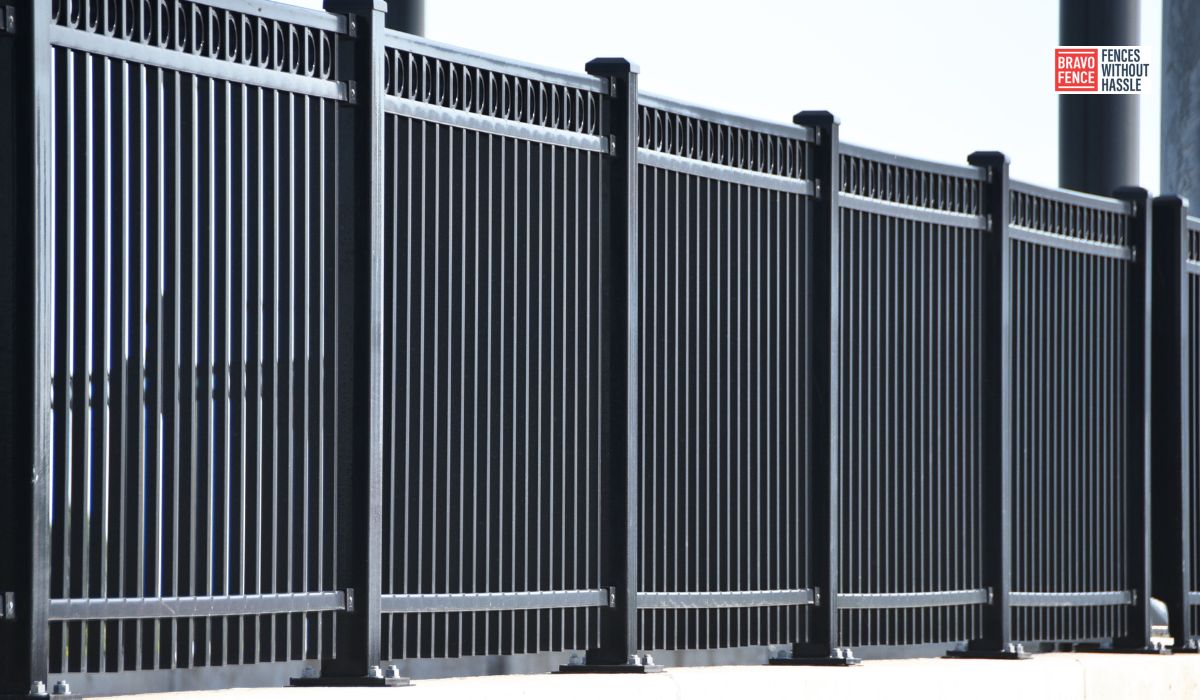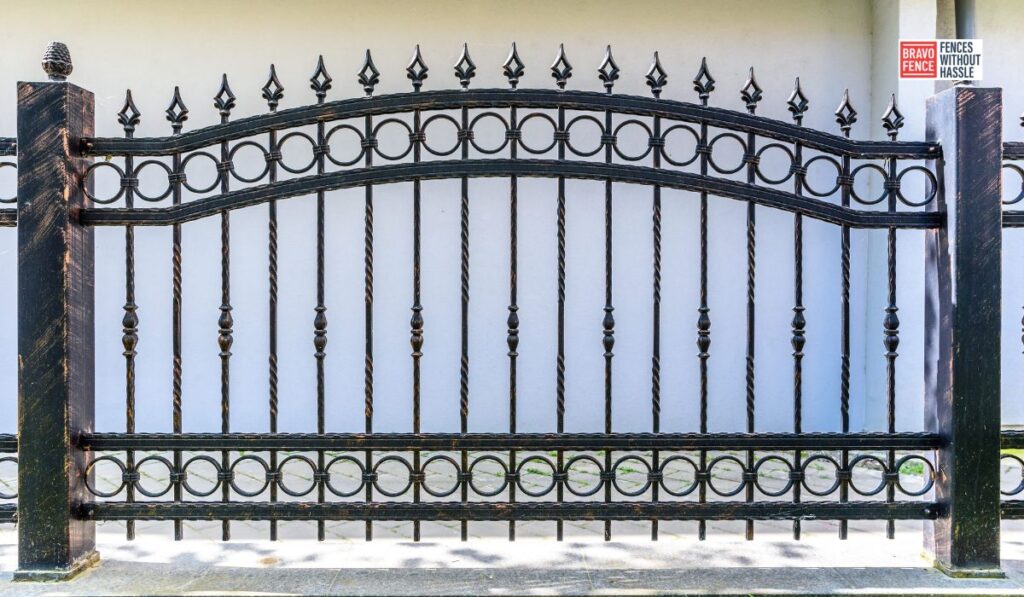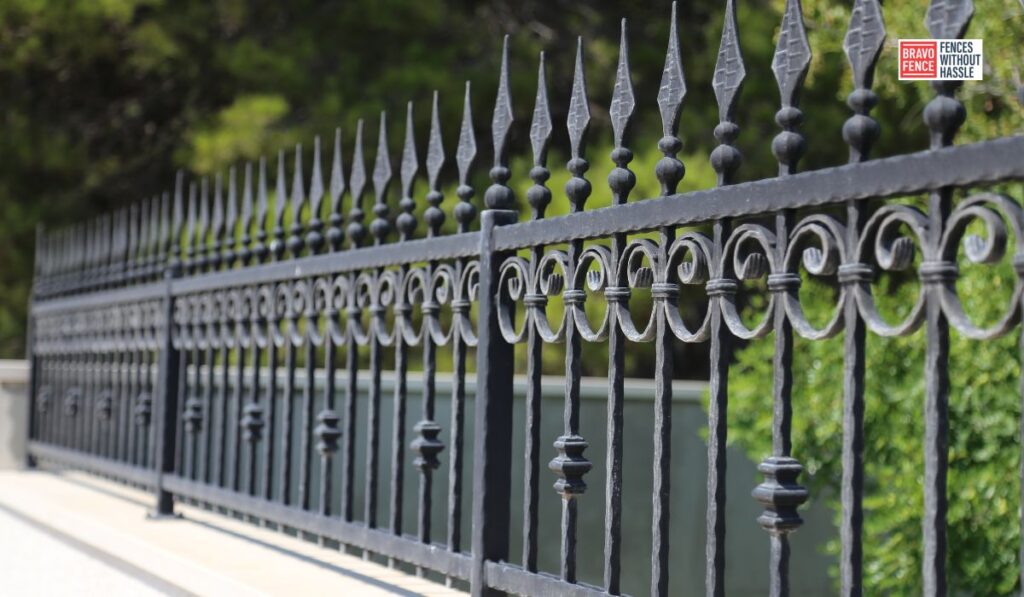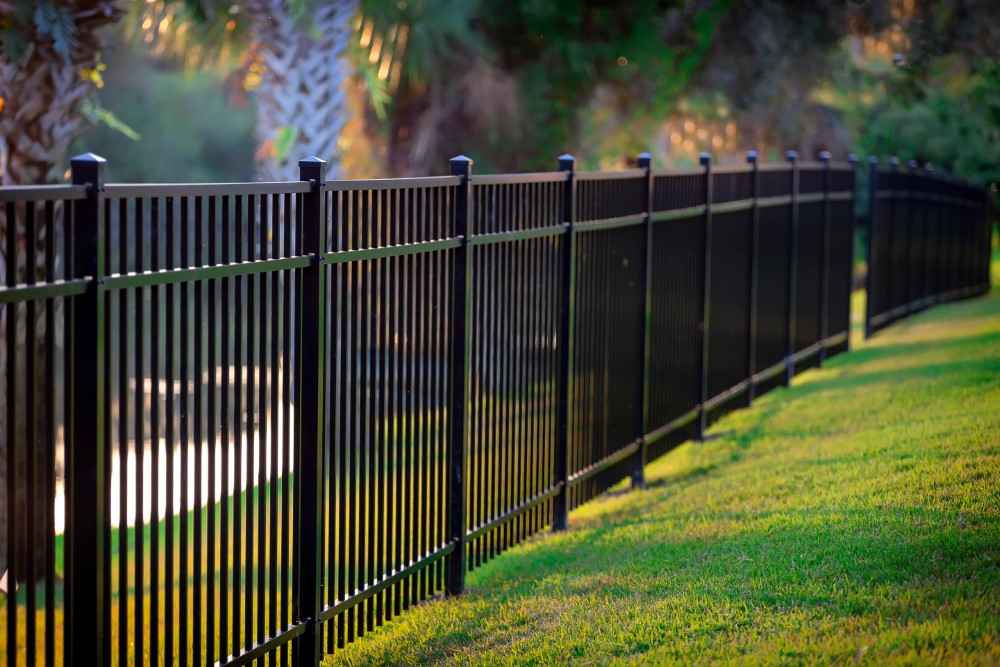
Counting the Cost: Budgeting for a Steel Fence
Fences serve multiple purposes – they provide security, enhance privacy, and define property boundaries.
Among the various materials used for fencing, steel stands out for its durability, strength, and aesthetic appeal.
However, before diving into the installation of a steel fence, it’s essential to consider the associated costs.
In this article, we’ll delve into the intricacies of budgeting for a steel fence, covering material expenses, labor costs, and additional factors to keep in mind.
Understanding Material Costs:
The cost of materials is a significant component of any fencing project.
When it comes to steel fences, the expenses can vary based on factors such as the type of steel, design preferences, and the size of the project.
Steel fencing materials typically include steel posts, rails, panels, and gates.
Additionally, coatings such as galvanization or powder coating may be required to enhance durability and prevent corrosion.
The type of steel chosen influences the overall cost.
While bare steel offers affordability, stainless steel or wrought iron options tend to be pricier due to their superior quality and resistance to rust and corrosion.
It’s crucial to balance budgetary constraints with the desired longevity and aesthetics of the fence.

Labor Costs and Installation Expenses:
Beyond material costs, labor expenses play a significant role in budgeting for a steel fence.
The complexity of installation, terrain conditions, and local labor rates all contribute to the final price tag.
Hiring a professional fencing contractor ensures proper installation and adherence to local building codes and regulations.
Installation costs typically include site preparation, excavation, setting posts, assembling panels, and finishing touches.
The intricacy of the design, such as ornamental details or customizations, may also impact labor expenses.
It’s advisable to obtain multiple quotes from reputable contractors to compare costs and ensure a fair price.
Additional Considerations:
In addition to material and labor expenses, several other factors should be considered when budgeting for a steel fence:
Permits and Regulations:
Check local zoning laws and building codes to determine if permits are required for fence installation—factor in any associated fees when calculating the total project cost.
Maintenance Costs:
While steel fences are known for their durability, periodic maintenance may be necessary to ensure longevity.
Budget for tasks such as cleaning, repainting, or rust removal as part of ongoing maintenance expenses.
Landscaping and Accessory Costs:
When estimating project costs, consider any landscaping adjustments or accessories such as gates, latches, or decorative elements.
These additional features can enhance the fence’s functionality and aesthetic appeal but increase the overall expenditure.
Long-Term Value:
Despite the initial investment, a well-constructed steel fence adds value to your property and offers long-term benefits such as security, privacy, and curb appeal.
When evaluating the overall cost, factor in the potential return on investment.
Durability and Longevity:
One of the key advantages of steel fencing is its exceptional durability and longevity.
Unlike other materials like wood, which are susceptible to rot, decay, and insect damage, steel fences are highly resistant to environmental elements.
This resilience translates to minimal maintenance requirements and long-term cost savings.
Homeowners can expect their steel fence to withstand the test of time, providing reliable security and aesthetics for years to come.
Customization Options:
Steel fences offer a wide range of customization options to suit individual preferences and architectural styles.
From sleek and modern designs to ornate and decorative patterns, steel’s versatility allows for endless possibilities.
Homeowners can choose from various heights, styles, colors, and embellishments to create a fence that complements their property’s aesthetic while meeting functional needs.
While customization may incur additional costs, the ability to tailor the fence to specific requirements adds value and personalization to the project.
Environmental Considerations:
In today’s eco-conscious world, environmental sustainability is a significant consideration for many homeowners.
Fortunately, steel fencing presents a sustainable option with high recyclability and minimal ecological impact.
Steel is one of the most recycled materials globally, with a recycling rate that far exceeds that of other metals.
Choosing a steel fence contributes to resource conservation and reduces the demand for virgin materials, making it an environmentally responsible choice.
Warranty and Insurance:
When investing in a steel fence, it’s essential to inquire about warranty coverage and insurance options.
Reputable manufacturers often offer warranties against defects in materials and artistry, providing homeowners with added peace of mind.
Additionally, homeowners’ insurance policies may offer discounts or coverage benefits for properties with sturdy and secure fencing in place.
Understanding the terms of warranty coverage and insurance implications can help homeowners make informed decisions and protect their investments in the long run.
Return on Investment:
While upfront costs are a significant consideration, it’s essential to evaluate the return on investment (ROI) associated with a steel fence.
A well-maintained and aesthetically pleasing wall enhances curb appeal, increases property value, and may attract potential buyers in the future.
Homeowners should consider the possible resale value and the role that a durable and attractive steel fence plays in enhancing the overall appeal of their property.
Ultimately, the ROI of a steel fence extends beyond monetary considerations, providing intangible benefits such as security, privacy, and pride of ownership.
Terrain and Site Preparation:

The terrain and condition of the installation site can significantly impact the cost of erecting a steel fence.
If the ground is uneven or rocky, additional excavation and leveling may be required, adding to labor costs.
Similarly, if the area is densely vegetated or obstructed by existing structures, clearing and site preparation can pose logistical challenges and increase project expenses.
It’s essential to assess the site thoroughly and factor in any necessary groundwork when budgeting for the fence installation.
Security Features:
Beyond the primary function of delineating property boundaries, steel fences can be equipped with various security features to enhance protection and deter intruders.
Options such as anti-climb designs, barbed wire or razor wire toppings, and integrated security systems may incur additional costs but provide invaluable peace of mind, especially for properties requiring heightened security measures.
Assessing security needs and incorporating appropriate features into the fence design can contribute to long-term security and safety.
Local Climate Considerations:
Climate conditions in the installation area play a significant role in determining the appropriate specifications and maintenance requirements for a steel fence.
In regions prone to high humidity, salt air, or extreme temperatures, selecting corrosion-resistant coatings and materials becomes paramount to ensure the fence’s longevity and structural integrity.
Additionally, frequent exposure to harsh weather elements may necessitate more frequent maintenance routines, such as cleaning and inspection, to prevent deterioration and prolong the fence’s lifespan.
Accounting for climate-related factors helps homeowners make informed decisions and avoid costly repairs or replacements down the line.
Conclusion
Budgeting for a steel fence involves a comprehensive assessment of material, labor, and additional expenses.
By understanding the factors that influence costs and conducting thorough research, homeowners can make informed decisions that align with their budgetary constraints and aesthetic preferences.
While the initial investment may seem daunting, the durability and aesthetic appeal of a steel fence offer long-term value and peace of mind.
Ready to start planning your steel fence project?
Contact Bravo Fence Company today for expert guidance and assistance.
Our team of professionals will work with you to design and install a high-quality steel fence that meets your needs and enhances your property’s security and aesthetics.
Click here to get in touch: Bravo Fence Company.
FAQs
How do I estimate the cost of materials for a steel fence?
The cost of materials depends on factors like the type of steel, design preferences, and project size. Common materials include steel posts, rails, panels, and gates, with options for coatings like galvanization or powder coating.
What factors influence labor costs for installing a steel fence?
Labor expenses are affected by installation complexity, terrain conditions, and local labor rates. Intricate designs or customizations may also impact costs.
Are there additional expenses besides materials and labor?
Yes, when budgeting for a steel fence, consider permit fees, maintenance costs, landscaping adjustments, and accessories like gates or decorative elements.
How does a steel fence add value to my property?
A well-constructed steel fence enhances security, privacy, and curb appeal, contributing to the property’s value and potential return on investment.
What are the durability and maintenance requirements of steel fences?
Steel fences are highly durable and require minimal maintenance compared to materials like wood. Periodic cleaning, repainting, or rust removal may be necessary for longevity.
Can I customize my steel fence?
Yes, steel fences offer various customization options in terms of height, style, color, and embellishments to match individual preferences and architectural styles.
Is steel fencing environmentally sustainable?
Yes, steel is highly recyclable, contributing to resource conservation and minimal environmental impact. Choosing a steel fence supports sustainability efforts.
What warranty and insurance options are available for steel fences?
Reputable manufacturers often provide warranties against defects, while homeowners’ insurance policies may offer coverage benefits for properties with secure fencing.
How does terrain affect the cost of installing a steel fence?
Uneven or rocky terrain may require additional excavation and leveling, while densely vegetated areas can pose logistical challenges, impacting project expenses.
Can steel fences be equipped with security features?
Yes, steel fences can include features like anti-climb designs, barbed wire toppings, or integrated security systems for enhanced protection, albeit with additional costs.
How do local climate conditions impact steel fencing?
Climate factors such as humidity, salt air, or extreme temperatures influence material selection and maintenance requirements to ensure the fence’s longevity and structural integrity.
Tags: Everything You Need to Know About Affordable Steel Fencing, Everything You Need to Know About Steel Fence Cost Calculator, Everything You Need to Know About Steel Fence Cost Estimate, Everything You Need to Know About Steel Fence Cost Per Foot, Everything You Need to Know About Steel Fence Pricing, Explore Helpful Resources on Steel Fence Installation Cost, Explore Helpful Resources on Steel Fence Maintenance Cost, Inspiration and Tips on Cost Of Steel Fence Panels, Inspiration and Tips on Cost Of Steel Fence Vs Wood Fence, Inspiration and Tips on Decorative Steel Fence Cost, Inspiration and Tips on Residential Steel Fence Cost, Top Ideas and Insights About Commercial Steel Fence Cost
